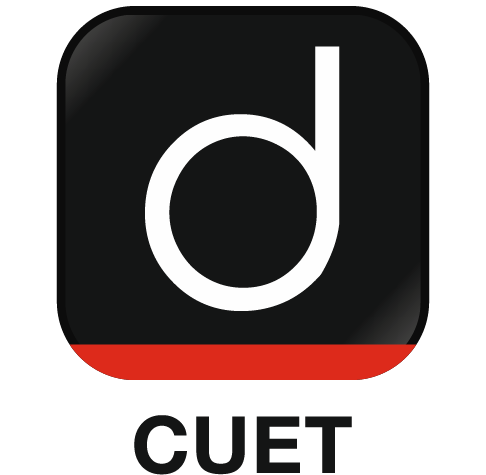A Comparison of The CUET To JEE Main and NEET In India

University entrance exams in India are highly competitive and represent a crucial step in a student's journey towards higher education. Several exams offer admission into undergraduate, postgraduate, and PhD programs at universities across the country. Notable exams include the Joint Entrance Examination (JEE) Main, the National Eligibility cum Entrance Test (NEET), and the Common University Entrance Test (CUET). This blog compares CUET with other university entrance exams in India, specifically JEE Main and NEET. We analyze the format, content, and difficulty level of CUET in comparison to these exams, providing a comprehensive overview of each.
Format
In 2018, JEE (Advanced) introduced Computer-Based Testing (CBT) for the first time, and the entire examination proceeded smoothly, setting a benchmark for the country. This successful implementation prompted discussions about extending this mode to other exams.
The establishment of the National Testing Agency (NTA) aimed to oversee the administration of JEE (Main) and various other exams. Initially, NTA conducted these assessments in both traditional offline and CBT formats. However, gradually, all their examinations transitioned to the CBT mode.
The Joint Entrance Examination, JEE (Main), comprises two papers. Paper 1 is administered for admission to Undergraduate Engineering Programs (B.E/B.Tech.) at NITs, IIITs, other Centrally Funded Technical Institutions (CFTIs), and Institutions/Universities supported or acknowledged by participating State Governments. JEE (Main) also serves as a qualifying examination for JEE (Advanced), conducted for securing admission to IITs. Paper 2, on the other hand, is conducted for admission to B. Arch and B. Planning programs across the nation. Each paper includes a combination of multiple-choice questions (MCQs) and numerical answer type (NAT) questions.
The exam is held twice a year (January and April). JEE Main Paper 1 (B.E./B.Tech) consists of 90 questions, with 30 questions each in Physics, Chemistry, and Mathematics. JEE Main Paper 2 (B.Arch/B.Planning) consists of three parts: Mathematics, Aptitude Test, and Drawing Test. Part 1 contains 25 questions, Part 2 contains 50 questions, and Part 3 contains 2 questions.
CUET is also a Computer-Based Test consisting of two papers: Paper 1 (CUET UG) for admission to undergraduate programs and Paper 2 (CUET PG) for postgraduate and PhD programs. The exam is held twice a year starting from 2023.
CUET is conducted in 13 languages. Paper 1 is divided into four sections — Section IA (Language), Section IB (other language), Section II (Domain-specific subjects), and Section III (general knowledge). The question format comprises multiple-choice questions. Section IA and Section IB contain 50 questions each. In Section II, there are a total of 45 questions. In Section III, there are 60 questions.
The 2024 CUET PG Exam Pattern differs based on the specific PG program, including MBA, MCA, LLM, MSc, and more. The examination consists of 100 multiple-choice questions (MCQs) categorized into two sections: Section A, containing 25 general questions, and Section B, including 75 domain-specific knowledge questions.
NEET, on the other hand, is a pen-and-paper-based exam conducted by the National Testing Agency (NTA). This test, conducted in 13 languages, serves as a standardized and uniform National Eligibility-cum-Entrance Test (NEET UG), facilitating admission to undergraduate medical education in all medical institutions.
The NEET PG examination is held for individuals seeking admission to medical MD and MS courses in India. Previously, the NEET PG exam comprised 300 questions, but this was subsequently reduced to 200. According to the 2024 NEET examination format, the test will comprise 200 multiple-choice objective questions drawn from various disciplines like Physics, Chemistry, and Biology, which is further divided into Botany and Zoology. For each subject, there will be two sections, one containing 35 questions and the other with 15 questions. The exam is held once a year.
Content
JEE Main covers topics from Physics, Chemistry, and Mathematics at the 10+2 level. The exam includes questions on topics such as laws of motion, thermodynamics, chemical reactions, trigonometry, and calculus. NEET covers topics from Physics, Chemistry, and Biology at the 10+2 level. The exam includes questions on topics such as human anatomy, cell structure, chemical reactions, genetics, and evolution.
CUET covers a wide range of subjects, depending on the program the student is applying for. The exam includes questions on topics such as English, General Knowledge, and Mathematics. However, it also includes subject-specific questions for various programs, such as engineering, science, commerce, and humanities.
Difficulty Level
JEE Main and NEET are considered more challenging exams because they are highly competitive, with a high level of difficulty to ensure that only the most capable candidates secure a spot in the top engineering and medical colleges in India. CUET, on the other hand, is a relatively less competitive exam conducted for admission to Central Universities in India. The level of difficulty of CUET is generally perceived to be lower than that of JEE Main and NEET.
That being said, the level of difficulty of any exam is subjective and can vary from person to person depending on their strengths, weaknesses, and level of preparation. Candidates should focus on preparing well and give their best effort, rather than getting caught up in the comparison of difficulty between different exams.
Conclusion
CUET, JEE Main, and NEET are all important entrance exams in India, each with different purposes and eligibility criteria. CUET is the most flexible of the three exams, covering a wide range of subjects and accepted by a large number of universities. JEE Main and NEET are more specialized exams required for admission to engineering and medical programs, respectively.
Students should choose the exam that is most relevant to their career goals and interests. They should also carefully consider the eligibility criteria and exam pattern before applying.
Sources:
https://jemain.nta.nic.in/about-jeemain-2023/
https://education.indianexpress.com/medicine-health-sciences-exam/neet-exam-pattern
https://jeemain.nta.nic.in/eligibility-criteria/
https://www.nta.ac.in/Engineeringexam
https://www.drishticuet.com/about_cuet
https://education.indianexpress.com/humanities-social-sciences-exam/cuet-pg-exam-pattern
https://timesofindia.indiatimes.com/education/engineering/jee-main-exam-pattern-and-marking-scheme
